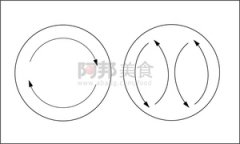How to identify instant coffee
Fake and shoddy coffee is mixed with chicory root powder in real coffee, or roasted and crushed grains and beans. Real coffee contains caffeine and has a special aroma. Poor-quality coffee is generally out of date or lax sealing caused by moisture caused by caking, obvious changes in aroma and taste, often the aroma disappears, drinking has a peculiar smell. There is also coffee powder milled as instant coffee, in fact, the two processes are different, instant coffee is concentrated coffee water, spray drying, the process is complex, immediately dissolved after brewing, no floating, no dregs, and although the coffee powder is ground very fine, there is floating matter after brewing, there are dregs, can not be swallowed, can only be blown to drink. It is also common to alter the shelf life of instant coffee packaging. The shelf life of instant coffee is usually two years.
Instant coffee is coffee beans roasted and crushed to get pure coffee, and then extracted and vacuum concentrated into powdered coffee, which can be brewed at any time and dissolve in boiling water. Sensory identification of the quality of instant coffee can be divided into two stages: before brewing and after brewing.
(1) pre-brewing identification
High-quality instant coffee-brown to dark brown due to different varieties and processes; irregular particles about 2 mm in size, mixed with some fine powder; unique aroma of coffee due to Maillard reaction during stir-frying.
Inferior instant coffee-dark in color, some iron black; caking or agglomeration in tissue due to moisture or other reasons; coffee roasting flavor is weak or can not be smelled at all, replaced by a strong scorched flavor.
(2) Identification after brewing.
Good quality instant coffee-completely dissolved, free of dregs and suspended matter; the soup juice is brown and bright; it has a strong coffee aroma; it has a pleasant bitter and sour taste after adding sugar.
Inferior instant coffee-after dissolving, there is sediment at the bottom of the cup, and the soup is dark and brown-black (at the same concentration); the aroma is light, but the scorched taste is strong; after adding sugar, the bitter taste and sour taste are strong, especially the aftertaste is hard.
Important Notice :
前街咖啡 FrontStreet Coffee has moved to new addredd:
FrontStreet Coffee Address: 315,Donghua East Road,GuangZhou
Tel:020 38364473
- Prev

Identify Blue Mountain Coffee
In Jamaica this mysterious land, grows the world's most superior coffee.
- Next

Advanced siphon pot: how to stir the siphon pot
After mastering the basic operation of the siphon pot, if you want to know more about how to make better coffee from the siphon pot, let's study how to stir it together. This is a crucial issue. Different stirring will cause subtle changes in the flavor of coffee. We can try different stirring from the two aspects of stirring technique and timing.
Related
- What is the meaning of lactic acid fermentation with coffee bean treatment?
- How to judge the state of foam by sound?
- How does the latte pull out the unicorn pattern? Come to get for a little trick to improve the flower pull!
- Will flower pulling affect the taste of the latte?
- Do you know the history of coffee?
- The difference between honey treatment and sun washing what is raisin honey treatment?
- What kind of milk can a novice use to make coffee foam to keep the foam longer? The correct method and skills of milking tutorial sharing
- Why do washed coffee beans taste sour? Flavor characteristics of washed Coffee
- Introduction to the skill of how to practice the size and height of water injection around the circle of hand-brewed coffee
- How do beginners practice coffee flower drawing from scratch?

